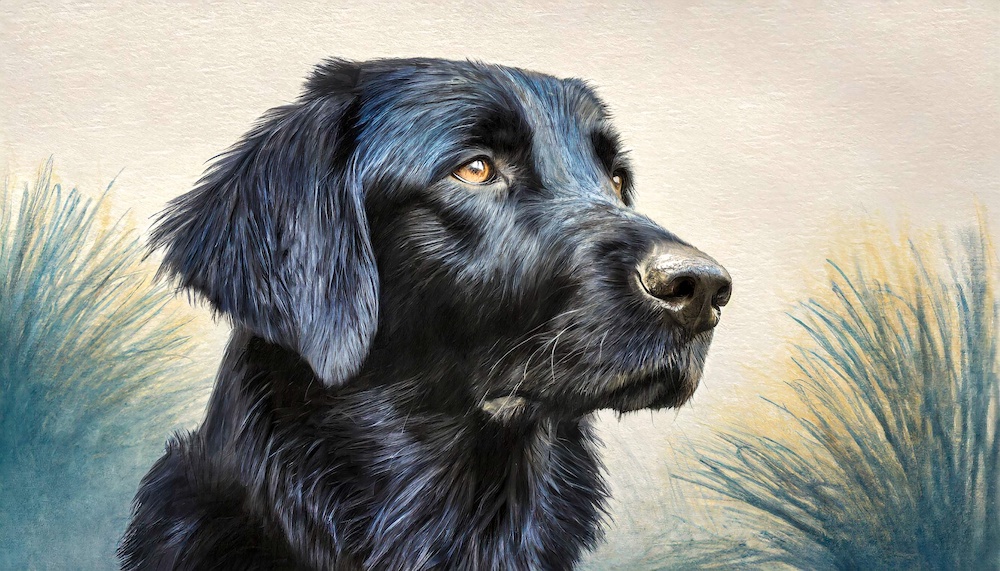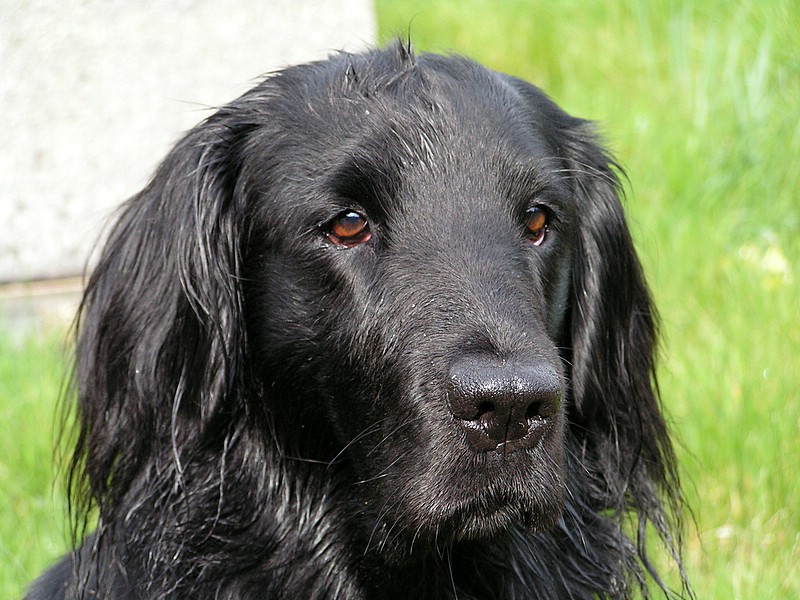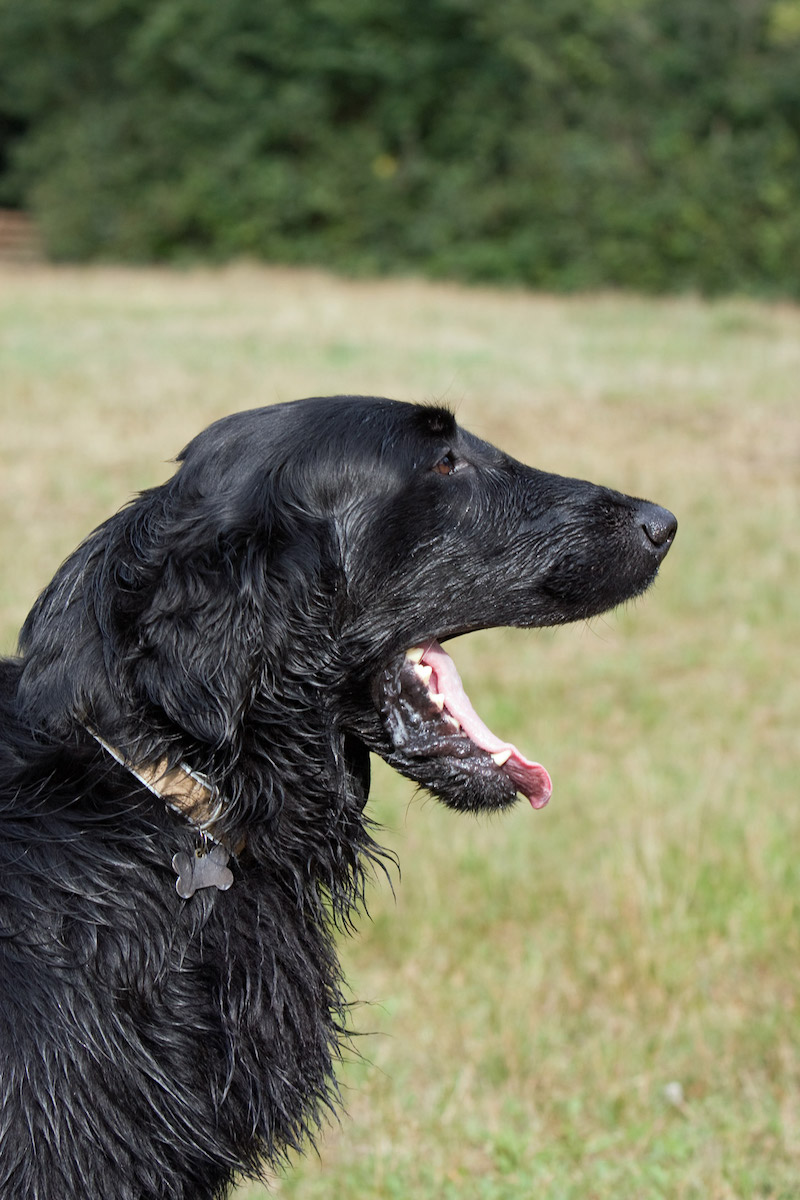
What do the following have in common?
- 3 Piece Suit
- 5 Piece Drum Set
- 10 Piece Screwdriver Set
- 12 Piece dinnerware place settings
- 10 Piece Screwdriver Set
You get the idea…..
The dog fancy has a “kind-of-sort-of” similar thing, and to our knowledge, it’s unique to only one breed. It’s called the “one piece head,” and that’s not our description – it’s written in the AKC breed standard.
We write of the Flat-Coated Retriever.
The “Flattie” has a sleek head, an unexaggerated muzzle that is long, clean, strong, deep, and free of exaggeration. To appreciate its barely perceptible stop, one should look at it from the side. From that perspective, we can see that the stop is actually very gradual, but take a step to one side or the other, and from that angle, the stop now appears to be more pronounced which is a fault. Still, looking at the head’s profile from the side is the only way to assess the relationship of skull to muzzle, and the depth of muzzle throughout its length.

Flat-Coated Retriever named “Molly” by Dave and Lynne Slater shared under Creative Commons Attribution 2.0 Generic license
Important, too, is to look down at the head from an overhead view while gently holding the dog’s ears out of the way (the FCR’s Illustrated Standard shows an outline of the head without ears because the ears should be blend into the hair of the neck when the head is being evaluated). In this way can one evaluate the width of the backskull which shouldn’t be any wider than the width of the skull at the eyes. Cheeks should protrude or be “bulgy,” the jaws be broad and strong, and while there shouldn’t be a dip beneath the eyes, there should be as much fill as possible so as to create as straight a line as possible down each side of the face.
One’s vantage point, then, is important.
Figuratively speaking, one should get the impression of a head that was formed out of wax, melted, poured into a mold, then popped out as one piece.

Wet and sleepy Flat Coated Retriever by Karen Arnold who released it into the CC0 Public Domain
Aside from being beautiful, one might ask, how is this advantageous to a sporting breed?
A long, strong, and deep muzzle nearly equal in length and breadth to the skull provides ample space for a Flat-Coat to carry large game birds gently. If the jaws aren’t broad enough, the dog has to grip the bird more tightly, and what dinner guest wants to cut into a pheasant breast with teeth marks in it? If the jaws aren’t strong enough, the dog will get too tired to retrieve game birds gently and repeatedly throughout day.
It takes a fairly flat skull with clean cheeks and a long deep muzzle to create the impression of a “cast in one piece” head, and this aspect of a Flat-Coated Retriever is non-negotiable. It is one of the breed’s most distinguishing characteristics because it is a function of the dog’s job. The Flattie isn’t a “head breed,” but the head is an important part of the overall Flat-Coat’s silhouette.
Top image: Digital drawing by Freddy Dendoktoor shared under the CC0 Public Domain
